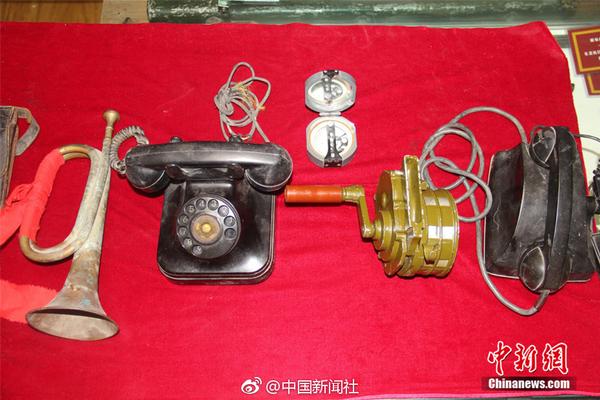
1. Use the Windows+E shortcut key to call up the Explorer → open the control panel. Clock language and region → language. Chinese → Move up.Double-click Chinese.
2. If you already have a Chinese language environment, just switch it. Use the Windows+E shortcut key to call up Explorer → open the control panel. Then click the third clock, language and area menu on the right in the control panel → change the display language. Region and language → keyboard and language.
3. Method 1: If your computer is a Windows 10 system, you can add a Chinese language package in Settings-Time and Language-Language and set it as the preferred language, and then log out or restart the computer to switch to the Chinese interface.
4. Select "Keyboard and Language" in the pop-up window and check whether there is "Chinese (Simplified)" in the tab under "Select Display Language". Select "Install Display Language" in the pop-up window.According to your needs, select the corresponding language package. If you need to install the "Chinese (Simplified)" language, click to select.
5. Please click the start menu, open the control panel, click "Region and Language", and select "Keyboard and Language". There is a "Select Display Language" below. Please check whether there is "Simplified Chinese". If so, please select it and click OK to try.
Connect the computer, open the control panel - region and language, change the format to "Chinese (Simplified, China)" and finally apply it. I'm assuming that you understand Korean, just go to the corresponding place to change it.
Download the language package directly, and then change the language through the system settings.First, open the settings of the computer, select the time and language on the homepage, and click to enter. First, click the windows icon in the lower left corner of the computer taskbar. Find the control panel in the pop-up options and click this panel to enter.
Just install a dual system, and you can switch with one click to install another system in a disk other than your existing system disk.
The specific method is as follows: use the Windows+E shortcut key to call up the Explorer to open the control panel. Clock language and regional language. Chinese moves up. Double-click Chinese. At this time, the save button is gray. Select the input method save button to use it. Click it.

1. Right-click the start button to select the command prompt (administrator), that is, there are two horizontal lines from top to bottom. The one above the first horizontal line, enter dism /online /Get-Intl and press to see the result. The rollback language may be set. Set it to Korean.
2. Find and select Chinese (Simplified Chinese, China) in the current system regional settings, 05 Next, select the location in the regional settings and set the location to China.Finally, click OK.
3. The specific language setting method is as follows: first find the setting (), then find the language (), select Chinese (), and finally press OK (), so that the software will become a Chinese version.
4. Open Start-Control Panel--Region and Language Options-Advanced. Then there is a language selection in the advanced. It is estimated that yours has been adjusted to Korean now.
5. If typing is changed to Korean, then right-click the small keyboard in the "Start" column, click Settings, which contains Korean (South Korea), click, and then click Delete next to it, and then it will disappear. Click Apply, and then click OK. If everything (including the system) is Korean, I guess it's unlikely.
6. The Korean version is not for your English reference. It should be the same.
win10 system computer office2010 Open the word software, enter the home page, and find " File" and click. After entering the file page, find "Options" below and click Open. After popping up the "Word Options" tab, find the "Language" tab in the left sidebar and click it.
Specific method: Click [ControlPanel] on the desktop or right-click on the start menu and then select [ControlPanel]. Enter the interface of ControlPanel, which is the control panel, and then click [Language].
Open the "Start Menu" and enter the "Settings "Select" Time and Language "Options" at the bottom left. Select the area and language "Options. Select "English" to download the English language package. Click" to set the main language "Restart the system language to take effect, and the system interface will display English.
1. When actually writing, write the first sound, middle sound and final sound together from top to bottom and from left to right to form square characters. There are 40 letters in Korean, including 21 vowels and 19 consonants. There are 21 vowel letters, 10 unit sounds, and 11 double vowels in Korean.
2. System maintenance Among the two, the first one is the most appropriate, and the second one means multi-layer inspection.
3. The marking method of Korean (Korean) is divided into Chinese characters and Korean. Chinese characters are ideograms, while Korean (Korean) is phoneme characters.
OKX app-APP, download it now, new users will receive a novice gift pack.
1. Use the Windows+E shortcut key to call up the Explorer → open the control panel. Clock language and region → language. Chinese → Move up.Double-click Chinese.
2. If you already have a Chinese language environment, just switch it. Use the Windows+E shortcut key to call up Explorer → open the control panel. Then click the third clock, language and area menu on the right in the control panel → change the display language. Region and language → keyboard and language.
3. Method 1: If your computer is a Windows 10 system, you can add a Chinese language package in Settings-Time and Language-Language and set it as the preferred language, and then log out or restart the computer to switch to the Chinese interface.
4. Select "Keyboard and Language" in the pop-up window and check whether there is "Chinese (Simplified)" in the tab under "Select Display Language". Select "Install Display Language" in the pop-up window.According to your needs, select the corresponding language package. If you need to install the "Chinese (Simplified)" language, click to select.
5. Please click the start menu, open the control panel, click "Region and Language", and select "Keyboard and Language". There is a "Select Display Language" below. Please check whether there is "Simplified Chinese". If so, please select it and click OK to try.
Connect the computer, open the control panel - region and language, change the format to "Chinese (Simplified, China)" and finally apply it. I'm assuming that you understand Korean, just go to the corresponding place to change it.
Download the language package directly, and then change the language through the system settings.First, open the settings of the computer, select the time and language on the homepage, and click to enter. First, click the windows icon in the lower left corner of the computer taskbar. Find the control panel in the pop-up options and click this panel to enter.
Just install a dual system, and you can switch with one click to install another system in a disk other than your existing system disk.
The specific method is as follows: use the Windows+E shortcut key to call up the Explorer to open the control panel. Clock language and regional language. Chinese moves up. Double-click Chinese. At this time, the save button is gray. Select the input method save button to use it. Click it.

1. Right-click the start button to select the command prompt (administrator), that is, there are two horizontal lines from top to bottom. The one above the first horizontal line, enter dism /online /Get-Intl and press to see the result. The rollback language may be set. Set it to Korean.
2. Find and select Chinese (Simplified Chinese, China) in the current system regional settings, 05 Next, select the location in the regional settings and set the location to China.Finally, click OK.
3. The specific language setting method is as follows: first find the setting (), then find the language (), select Chinese (), and finally press OK (), so that the software will become a Chinese version.
4. Open Start-Control Panel--Region and Language Options-Advanced. Then there is a language selection in the advanced. It is estimated that yours has been adjusted to Korean now.
5. If typing is changed to Korean, then right-click the small keyboard in the "Start" column, click Settings, which contains Korean (South Korea), click, and then click Delete next to it, and then it will disappear. Click Apply, and then click OK. If everything (including the system) is Korean, I guess it's unlikely.
6. The Korean version is not for your English reference. It should be the same.
win10 system computer office2010 Open the word software, enter the home page, and find " File" and click. After entering the file page, find "Options" below and click Open. After popping up the "Word Options" tab, find the "Language" tab in the left sidebar and click it.
Specific method: Click [ControlPanel] on the desktop or right-click on the start menu and then select [ControlPanel]. Enter the interface of ControlPanel, which is the control panel, and then click [Language].
Open the "Start Menu" and enter the "Settings "Select" Time and Language "Options" at the bottom left. Select the area and language "Options. Select "English" to download the English language package. Click" to set the main language "Restart the system language to take effect, and the system interface will display English.
1. When actually writing, write the first sound, middle sound and final sound together from top to bottom and from left to right to form square characters. There are 40 letters in Korean, including 21 vowels and 19 consonants. There are 21 vowel letters, 10 unit sounds, and 11 double vowels in Korean.
2. System maintenance Among the two, the first one is the most appropriate, and the second one means multi-layer inspection.
3. The marking method of Korean (Korean) is divided into Chinese characters and Korean. Chinese characters are ideograms, while Korean (Korean) is phoneme characters.
 Binance APK
Binance APK
499.67MB
Check Binance APK
Binance APK
543.81MB
Check Binance login
Binance login
716.64MB
Check OKX review
OKX review
511.63MB
Check OKX Wallet app
OKX Wallet app
833.83MB
Check OKX Wallet download
OKX Wallet download
823.44MB
Check Binance market
Binance market
734.77MB
Check Binance download APK
Binance download APK
459.68MB
Check OKX download
OKX download
192.96MB
Check Binance app
Binance app
514.62MB
Check OKX review
OKX review
456.91MB
Check Binance download
Binance download
837.31MB
Check Binance US
Binance US
718.26MB
Check Binance login
Binance login
488.41MB
Check Binance app
Binance app
311.37MB
Check Binance download
Binance download
673.94MB
Check Binance app
Binance app
169.77MB
Check Binance APK
Binance APK
432.83MB
Check OKX review
OKX review
831.92MB
Check OKX Wallet APK
OKX Wallet APK
688.47MB
Check Binance wikipedia
Binance wikipedia
728.44MB
Check Binance APK
Binance APK
499.22MB
Check OKX app
OKX app
275.98MB
Check OKX Wallet app download for Android
OKX Wallet app download for Android
969.34MB
Check Binance app
Binance app
828.77MB
Check OKX review
OKX review
351.16MB
Check okx.com login
okx.com login
358.66MB
Check Okx app download
Okx app download
946.74MB
Check OKX Wallet login
OKX Wallet login
996.41MB
Check Binance Download for PC Windows 10
Binance Download for PC Windows 10
924.69MB
Check OKX app
OKX app
652.66MB
Check Binance market
Binance market
496.97MB
Check Binance market
Binance market
366.18MB
Check OKX Wallet Sign up
OKX Wallet Sign up
649.89MB
Check OKX Wallet APK
OKX Wallet APK
475.35MB
Check Binance Download for PC Windows 10
Binance Download for PC Windows 10
347.71MB
Check
Scan to install
OKX app to discover more
Netizen comments More
2722 不拘小节网
2025-02-28 09:32 recommend
1498 甚嚣尘上网
2025-02-28 09:14 recommend
1278 肠肥脑满网
2025-02-28 08:55 recommend
2911 以古非今网
2025-02-28 08:42 recommend
924 分丝析缕网
2025-02-28 08:06 recommend